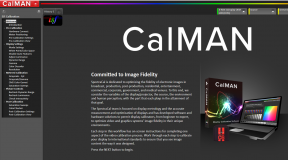Panasonic PC29XF10A – The remote control is not well designed and some of the menu items are very awkward to access. There is also no way to turn off the blue screen which would be nice for locking in on those weaker satellite signals. The Settings reset button is only activated when the picture settings are not using one of the three presets from memory. Change one attribute by the smallest amount and the whole palette can then be reset to the awful factory preset.
Proscan PS34190 – I really hate those reset switches that clear all the previous choice settings. I may also eventually take the exacto knife to the button and cut it off to make it a pen reset type button which is the way it should have been. (I said it, I did it.) The improved definition image can be either a godsend or a curse depending on the material. It started out looking awful as the images appeared with some type of ghosting image next to them. I fixed this problem by adjusting the vertical and horizontal focus controls and the images are much more acceptable. Love it or hate it, these line doubled images are different. No scan lines and very little video noise. Sometimes the video image bleeds colours, but is this more due to the Laserdisc player and the software or the set itself. (Though according to other sources, the colour decoder in this set may also be problematic.) One real sore point is that the set does not remember the mode settings once you turn it off. It always starts out at 4:3 which is annoying and explains why the burn in occurred over time. With the internal adjustment of the Cinema A mode, the geometry is corrected, but the image is now centered near the top completely cutting off the bottom. On most letterbox films, you get this fat black band at the top and virtually no banding on the bottom. The only way to correct this is to manually pan the image to the bottom. It is a trade off to get the correct geometry with all the modes.
Pioneer SD-P5071 – No brightness pulse and no internal reflections means a less bothersome viewing experience. Other minor glitches may yet surface over time and will be detailed. The brightness loss from just standing up is occasionally bothersome as well as the double images when adjusting associated equipment. The PIP adds a brightness strip through the entire length of the screen affecting the overall image. This only appears when the PIP is from the composite source and the main is the S-Video source. In the reverse condition, no brightness band is visible. Wai believes that this points to the way the signal from the SVHS machine is handling the additional composite signal and he may be right so it is not really a problem with the television, so much as the strange signal I am putting into it. Significant brightness shifts within an image creates dark vertical lines that move through the image. Hard to determine if this is a power supply problem or what. The internal power is very good given the lack of distortion on the needle pulse frames. (Hold that thought, I may be wrong and the power supply may be problematic. More to say once the repair people come to take a look at this problem. Possible that the power supply is unusually weak and I will not accept the nothing to be done excuse. Horror of horrors as the technician says this is the first time he has seen a defect like this on any of the Pioneer sets and he has no idea how to correct it. He says that he will be in touch with Pioneer Canada directly to see if there is a way to solve this problem. The problem is very bothersome depending on the material and contrary to any previous notion, it also shows up in widescreen films though to a much lesser extent.) I hope this particular kink works its way out of the system after a reasonable burn in period. A dark hat in a well-lit scene will cause problems as the vertical plane of the hat creates a darkness distortion from left to right on the screen. I suspect that the problem is directly related to a weak power supply and a visit from the repair people should help, assuming that they are competent. It is a real problem with the set as the problem does not show up on the floor model at the store. This is sort of good news as Pioneer has sent the Edmonton people a replacement part to see if it will solve the problem. December 28, 1995 will be the fateful day and I wager that the part will not fix the problem and they will have to look further into the problem. The wait is even longer as the technician was sick. Next date is January 2, 1996. And guess what, they were unable to correct the fault at this time and they are back to the drawing board. Upon further investigation with the new CLD-D703 Laserdisc player on this set, I have noticed that the dreaded shadows have disappeared on previously documented disc related programs. But when the same is played back on the Panasonic player, the shadows return. This explains why I did not see the problem on the Pioneer set in the London Drugs showroom as the test playback was on a Pioneer unit as well. The conclusion here seems to be that there is an inherent incompatibility between the television and all other consumer electronic input devices except those originating from Pioneer. I have stumbled upon a design defect in the set as I had originally feared and the alleviation of this problem will be difficult if not impossible from Pioneer’s stand point. If all goes well in the long run, they will be forced (through the goodness of their hearts) to replace this set with a newer model since this one is no longer available. Only the SD-P5181 is available now although it may still have the standard glass comb filter and not the 3-D digital variety. Of additional interest is that no one locally is even carrying this base unit so it would have to be special ordered. “Get me that nine point convergence system please.” They will be hard pressed to duplicate this problem in their repair shops too since their playback equipment will likely be Pioneer items. I will press forward on this matter and continue to bother Pioneer until some action is taken on the matter. I have pushed forward and appear to be at the next step as the Pioneer Canada people have contacted Pioneer America in Carson City, California for further trouble shooting. I have spoken with the U.S. people (supposedly the designer of this particular set) and they have suggested an even larger part replacement may be in order. One step closer to a solution … one way or another. Other than the phone calls, the frustration may be worth it to get something better. They even suggested that I name a particular disc where the problem was evident so that they could try to duplicate the problem. “Replace the entire video board please.” And that’s exactly what they tried to do in early February 1996 following this recent round of talks. Too bad the replacement board turned out to be D.O.A. out of the box and the technician had to send for another. It’s on to the next week. More on this as the events develop. The power supply control board was the next item switched by the technician and it did not solve the problem with the shadows. What’s next? … The video board of course, and then the replacement of each and every gun which they will not do. Beyond the video board is a replacement set. Now they are asking to see if the dealer has an identical model available for the service people to look at. The solution seems to be around the corner. (Is the joke on them if they cannot duplicate the problem on that set … and I am betting that they cannot for reasons explained earlier.) The problems with both sets are very different, but equally disturbing so neither set has an advantage in this category. The swap function of the PIP always defaults the PIP to the lower right corner of the picture regardless of where the PIP was moved to. This creates problems during specific comparison tests as the swap box ends up covering vital information and the user has to reposition the PIP to the correct corner location again. The RCA retains in memory the exact corner where the PIP has been placed. To wrap up the tale of the Pioneer set, for the record, I was able to finally get some hands on time with the replacement unit and to my shock, Pioneer decided to take away half the features that were included on the reviewed model. Gone are all the advanced PIP functions as well as a quick access menu system. The new set takes up to five times as long to perform the same functions as previously required. The designers at Pioneer have added five to ten more key strokes to accomplish the same task. They view this as a simplified menu system, but I think of it as a mess. It justifies my desire to get rid of the unit which I have. If the original unit had these same features, I believe that I would not have wanted the unit. The only addition that was worthwhile for the set was the nine point convergence system although that too had some faults.
RCA 46729BA – The brightness pulse from the set comes to mind which is bothersome, but all RCA projection sets do this as it is inherent in the design. Given bright lighting conditions, viewers may not notice this pulse that lasts about 1/30th of a second (never tried to time it) and occurs once every 5 to 10 minutes, but that depends too. There are also internal reflections behind the screen. The vertical viewing angle is much greater than the Pioneer set as the brightness does not drop off once the viewer stands up. The blue and red shifts from moving left to right and back are bothersome for those sitting outside the sweet spot. (Discriminating) Viewers on the left side see images shifted to blue and those on the right side see a red shift. The PIP also only works with one input and tuner as the inputs cannot be selected separately. It looks as if no television is perfect, and only a matter of hours and days before I start to notice flaws in the unit. The PIP, although less flexible than the Pioneer’s is purely analog in form and the overall picture quality is significantly crisper than the digitized PIP on the Pioneer. Advantage RCA.





